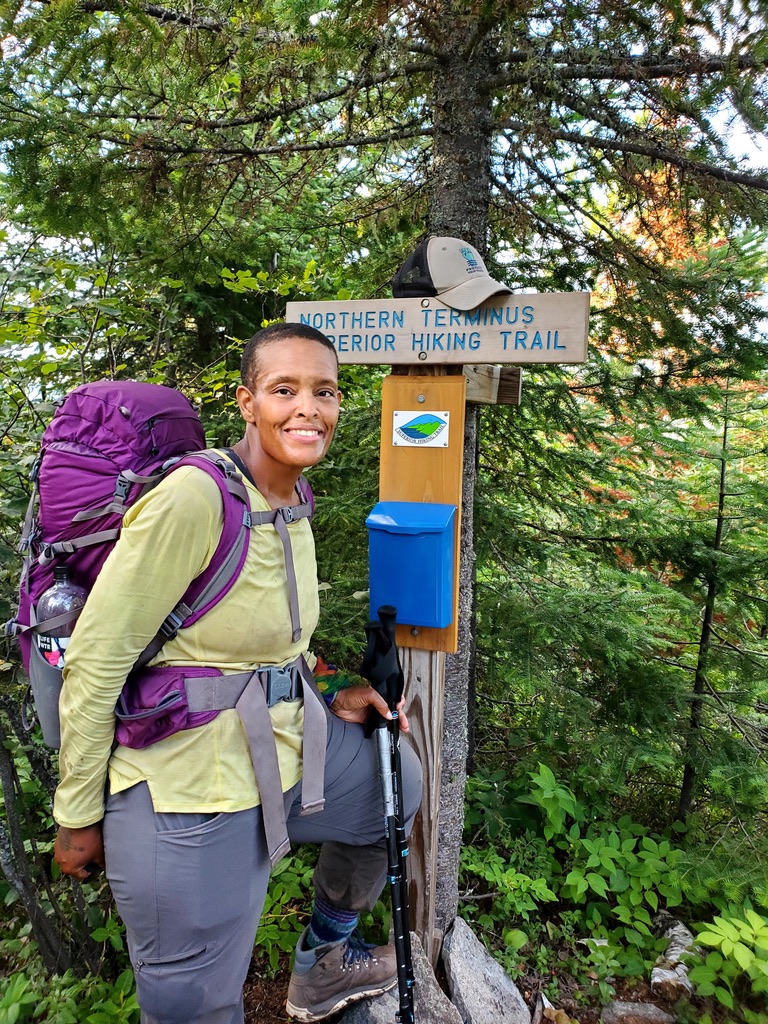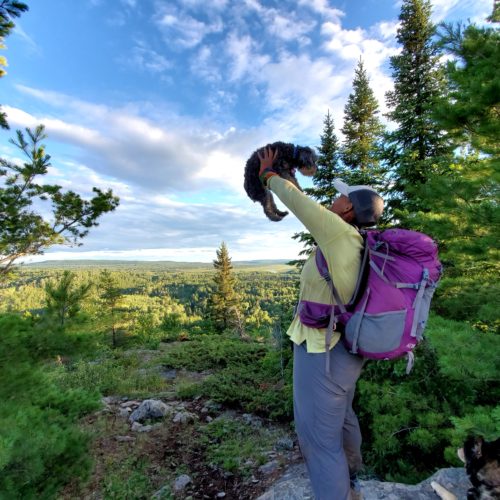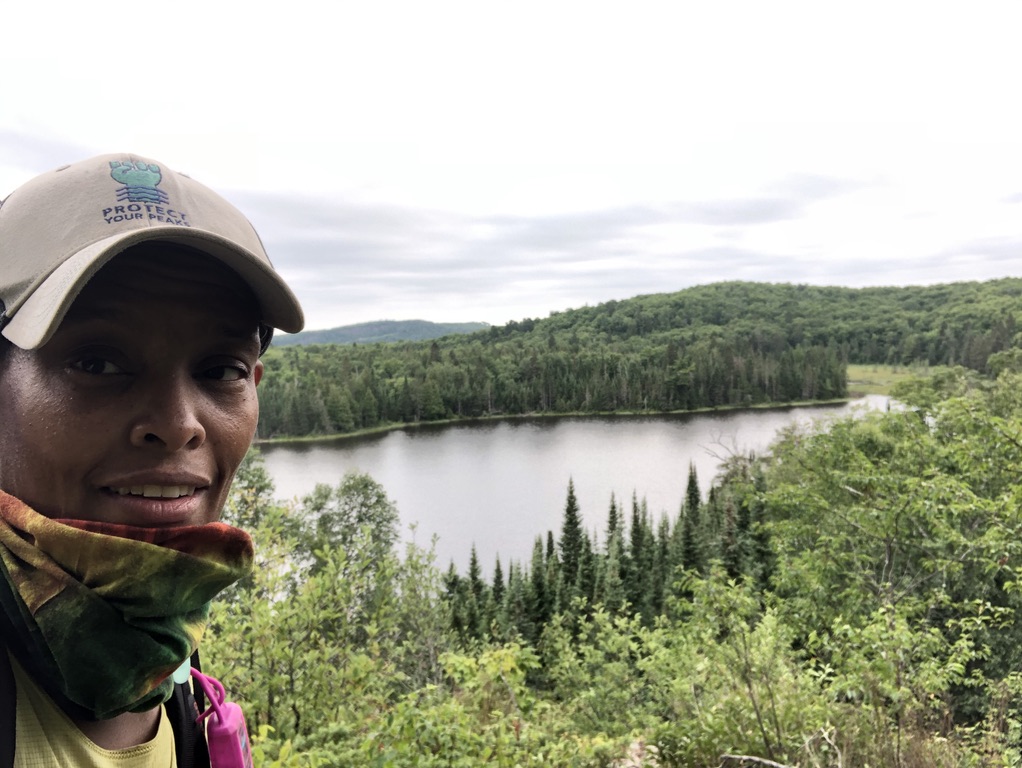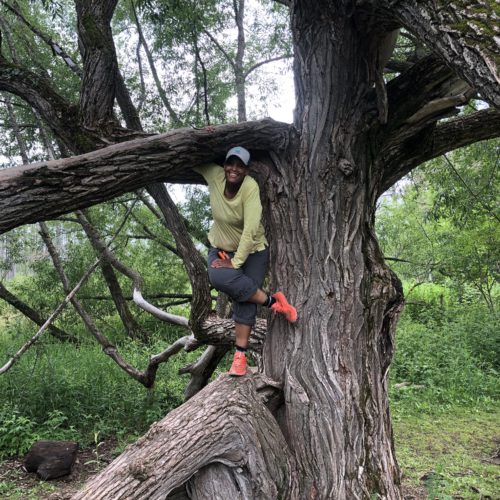On July 4, 2020, I began my 310-mile trek on the Superior Hiking Trail (SHT).
By hiking the SHT, I chose to speak out against racial injustice in the United States— brought to light by the death of George Floyd in Minneapolis. (Read more)
I began my hike at the Wisconsin/Minnesota border and ended at the Canadian border. I completed my 310+ mile hike on July 28, 2020.
<script async src=”https://pagead2.googlesyndication.com/pagead/js/adsbygoogle.js?client=ca-pub-6139803315441080″
crossorigin=”anonymous”></script>
The SHT is a rough trail with lots of roots, mud holes, and rocks, which I tripped over and stepped in many. I also slipped countless times. With each trip and fall, I was supported by my trekking poles. It was a reminder to get back up and to keep moving. For a lot of reasons, but one in particular, I was hiking the future generations.
For centuries, walking sticks have served many purposes: support for traveling on uneven ground, as a survival tool, as a defensive weapon, and gradually as a sign of power and authority.
Think of the wise mandrill monkey, Rafiki, in The Lion King. He carried his staff—or a walking stick for those wanting the correlation to hiking. Trekking poles are an extension of that staff.
As with Rafiki, the trekking poles allowed me to tune into nature and connect meaningfully with my ancestors who walked the land before me. The Indigenous spirits paved a safe passage. The trekking poles allowed me to bushwhack through tall grass and determine the depth of the marshy ground.
On other hikes, I’ve left my poles holstered, but I kept them in hand for the majority of this hike. Trekking poles help maintain balance over obstacles. I can say that my trekking prevented sprained ankles and one potentially sprained knee.
In all the ways my trekking poles protected me during my hike, I still thought about the joint-locks and takedowns, when poles are used as weapons—snapshot glimpses of welts and bruises left on the backs of enslaved people. Sadly, those methods aren’t in the past. Watching the news, we see highlights of police officers in riot gear with batons (aka “riot sticks”) in hand at Black Lives Matter (BLM) protests.
My partner met me at the Northern Terminus. We planned to hike the summit overlook together (I was told a lot of thru-hikers end their hike at the trailhead, which is a parking lot. I don’t recommend that option).
<script async src=”https://pagead2.googlesyndication.com/pagead/js/adsbygoogle.js?client=ca-pub-6139803315441080″
crossorigin=”anonymous”></script>

When she arrived, she brought her two dogs and my dog Carma. Together, we all hiked the final mile to the overlook. As we walked, the message of control and the treatment of enslaved people played in my mind.
When we reached the summit, Carma wanted to be carried. I jokingly started singing The Circle of Life from The Lion King, holding her over the edge of the overlook — back to Rafiki, the trekking poles, the missed mishaps, the welts, and bruises inflicted upon Black flesh. The death of George Floyd, a Black man who died while being restrained by a white Minneapolis police officer.
George Floyd didn’t have trekking poles. George Floyd will never summit the overlook and breathe in the air.
I hiked 310 miles in honor of George Floyd, yet my journey felt incomplete at the end of 310 miles.
Still in Minnesota, on July 30, I drove to the George Floyd memorial site at 38th Street and Chicago Avenue in Minneapolis. There, I was flooded with emotions rounding the corner where George Floyd took his last breath. I knelt because I genuinely could not stand. I cried over the chalk outline of his body.
Kneeling, it became clear that those poles were an agent of change. They can change how we approach relationships, from combatants to allies. Those trekking poles could lead to positive outcomes. If we all picked up trekking poles and went for a hike, could the violence end?
Someone would have to put down their sticks. I put down my sticks (trekking poles) in a symbolic gesture and left them on the momentum. I imagine this is progress.
<script async src=”https://pagead2.googlesyndication.com/pagead/js/adsbygoogle.js?client=ca-pub-6139803315441080″
crossorigin=”anonymous”></script>
Hike end: July 30, George Floyd Memorial at 38th Street and Chicago Avenue in Minneapolis, MN.
P/C: on trail @dkap09 (minus selfie)
P/C: memorial site @wanderingseagoat

















